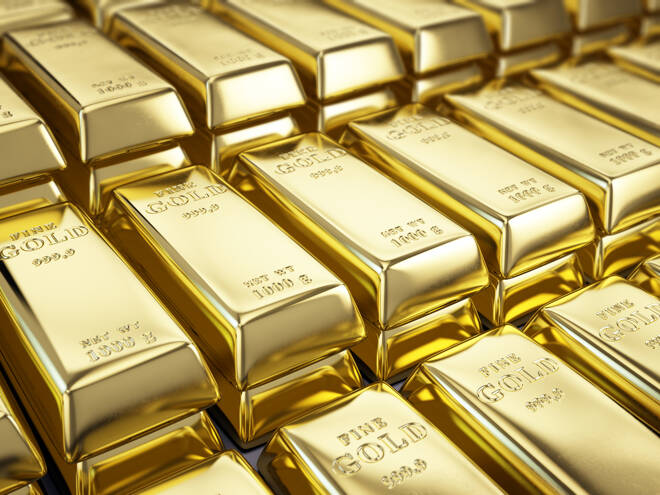Advertisement
Advertisement
PCE Inflation Gauge Rising to 2008 Levels Takes Gold Higher
By:
The data that the Federal Reserve prefers to use to measure inflation is the PCE.
The PCE or Core Personal Consumption Expenditure Price Index measures the prices paid by individuals for the domestic purchase of goods and services, excluding the price of food and energy. This is the number the Federal Reserve uses to measure current inflation rates. The Fed has for years (pre-pandemic) used 2% percent as their inflation target. During the pandemic, they have altered their mandate to let inflation run hot or above 2% and instead focusing on boosting employment in the United States. However, the current PCE index is roughly double the Federal Reserve’s target of 2%.
Today the Bureau of Economic Analysis revealed that U.S. inflation rose sharply in May. It showed that prices are rising at their fastest pace since 2008. The PCE climbed 0.4% in May, which takes the annual PCE inflation rate to 3.9%.
The unknown factor is whether or not these rising costs are sticky (sustainable) or transitory. The Fed has argued that the vast majority of increases are transitory and should naturally move lower over time. More importantly, the fact that this index gauge strips out increase cost for food and energy prices which have been dramatically increasing over the last year if added, we see the current inflation rate at roughly 5% according to the CPI (a gauge for inflation that includes both food and energy).
Unquestionably the U.S. economy is reopening, and the infusion of massive federal fiscal spending has fueled explosive growth. The recent surge has resulted in increased demand for goods and services which are above the ability of corporations to fill the supply.
This brings into question whether or not the Federal Reserve is correct in assuming that inflation will drop back to 2% in 2022. An article in MarketWatch quoted chief economist Chris Low of FHN Financial, who said, “This week, we heard from more than half a dozen Fed speakers. Most are sanguine about inflation, but some are getting nervous. At the moment, there’s no way to know for certain which group is closer to the truth.”
They also cited economists at Citibank who wrote to clients in a note, “While much of the strength in inflation recently should prove temporary, we expect core inflation to run above the 2% target through 2022.”
The question of the temporary nature of the current inflation rate caused gold to close higher on the day and on the week, which is the first occurrence of a higher weekly close for gold in four weeks. Today gold futures basis, the most active August contract, is fixed at $1781.80. This is a net increase of $5.10 (+0.29%) on the day. This week gold opened on Monday at $1764.50, which means that gold gained approximately $17 for 0.9804% during this week.
Equally important is the fact that gold futures pricing has found a base or level of support at $1770 per ounce. There is a caveat to recent price action in gold which is the narrowing of the 200- and 50-day moving averages. If this continues and the 200-day M.A. closes below the 50-day, it would create a technical chart pattern called a “Death Cross.”
For those who want more information, please use this link.
Wishing you, as always, good trading and good health,
Gary S. Wagner
About the Author
Gary S.Wagnercontributor
Gary S. Wagner has been a technical market analyst for 35 years. A frequent contributor to STOCKS & COMMODITIES Magazine, he has also written for Futures Magazine as well as Barron’s. He is the executive producer of "The Gold Forecast," a daily video newsletter. He writes a daily column “Hawaii 6.0” for Kitco News
Advertisement
